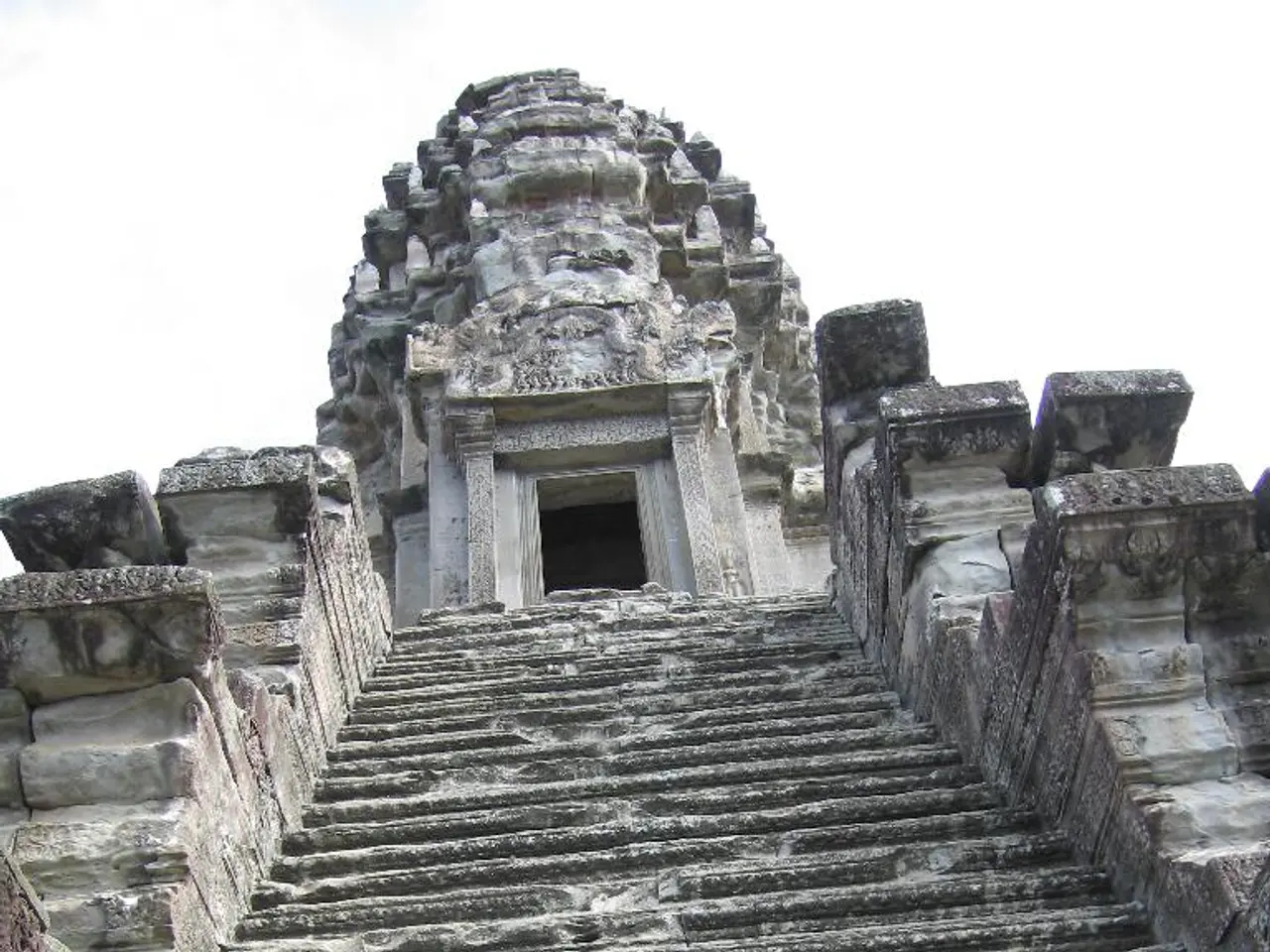The Insider Guide to Vardzia: Georgia's Subterranean Metropolis, Secluded Home of a Queen and Her Kingdom
Exploring the Medieval Marvel: Vardzia, Georgia's Hidden Gem
Nestled on the slopes of Erusheti Mountain in southern Georgia, the medieval cave city of Vardzia is a testament to the ingenuity, faith, and resilience of the Georgian people. Carved out in the 12th century under King Giorgi III, this fortified sanctuary was later expanded and transformed by his daughter, Queen Tamar, into a vast monastic-fortress complex [1][2][3].
In its golden age, Vardzia extended for about 500 meters along the cliff, reaching thirteen floors in some places and containing up to 6,000 rooms. These rooms served diverse functions, including chapels, living quarters, libraries, pharmacies, forges, and wine cellars [1]. An intricate aqueduct and irrigation system channelled water from the nearby Mtkvari River to sustain the site's inhabitants and the terraced farms below, ensuring both spiritual and physical survival in a secluded environment [1].
One of the most notable landmarks at Vardzia is the Church of the Dormition, also known as the Church of the Assumption, constructed in the 1180s. This remarkable structure boasts lofty barrel-vaulted ceilings and murals from the 12th century. The murals depict Queen Tamar, Georgia's fabled monarch, unmarried and without conventional headgear, a departure from traditional representations of royalty [4].
Just 10 km from Vardzia lies the secluded cave monastery of Vanis Kvabebi, carved in the 8th century and accessible via wooden ladders. Further afield, visitors can explore the medieval Khertvisi Fortress, dating from the 10th-14th centuries, located 15 km from Vardzia. For those seeking a more tranquil experience, the Zeda Vardzia convent, featuring a modest 11th-century church and rose gardens tended by resident nuns, is 3 km upstream from Vardzia [5].
Nature lovers and birdwatchers will appreciate Paravani Lake, the largest lake in Georgia, approximately 80 km from Vardzia. For those interested in medieval architecture, Rabati Castle in Akhaltsikhe offers restored structures mingling Georgian, Ottoman, and Armenian influences, located 60 km from Vardzia [6].
Visitors planning a trip to Vardzia should note that the best time to visit is during late spring (May-June) and early autumn (September-October) when the weather is pleasant, and the region's landscapes are lush or autumnal. Summers (July-August) can be hot and dry, while winters (December-February) are cold, with snow making travel more challenging [7].
Citizens of over 90 countries, including the EU, UK, USA, Canada, Australia, New Zealand, and India, can enter Georgia visa-free for up to one year. Other travellers may apply online for an e-Visa through Georgia's Ministry of Foreign Affairs e-Visa portal. However, it's important to ensure your passport is valid for at least six months beyond the intended date of departure from Georgia [8].
A visit to Vardzia offers a unique glimpse into Georgia's rich history, artistry, and spirituality. This medieval marvel, with its cave architecture, spiritual heritage, and embodiment of medieval Georgian aspirations and bravery, is a must-see destination for any history or architecture enthusiast.
[1] Georgian National Tourism Administration [2] Britannica [3] UNESCO World Heritage Centre [4] BBC News [5] Georgian National Tourism Administration [6] Georgian National Tourism Administration [7] Georgian National Tourism Administration [8] Georgian National Tourism Administration
Vardzia's travel itinerary offers a lifestyle immerse in medieval architecture and spirituality, with attractions like the Church of the Dormition and Vanis Kvabebi cave monastery. For nature lovers and birdwatchers, Paravani Lake, located 80 km from Vardzia, provides a tranquil experience. A distinctive highlight of the Vardzia travel experience is the unique exploration of Georgia's rich history and artistry.




